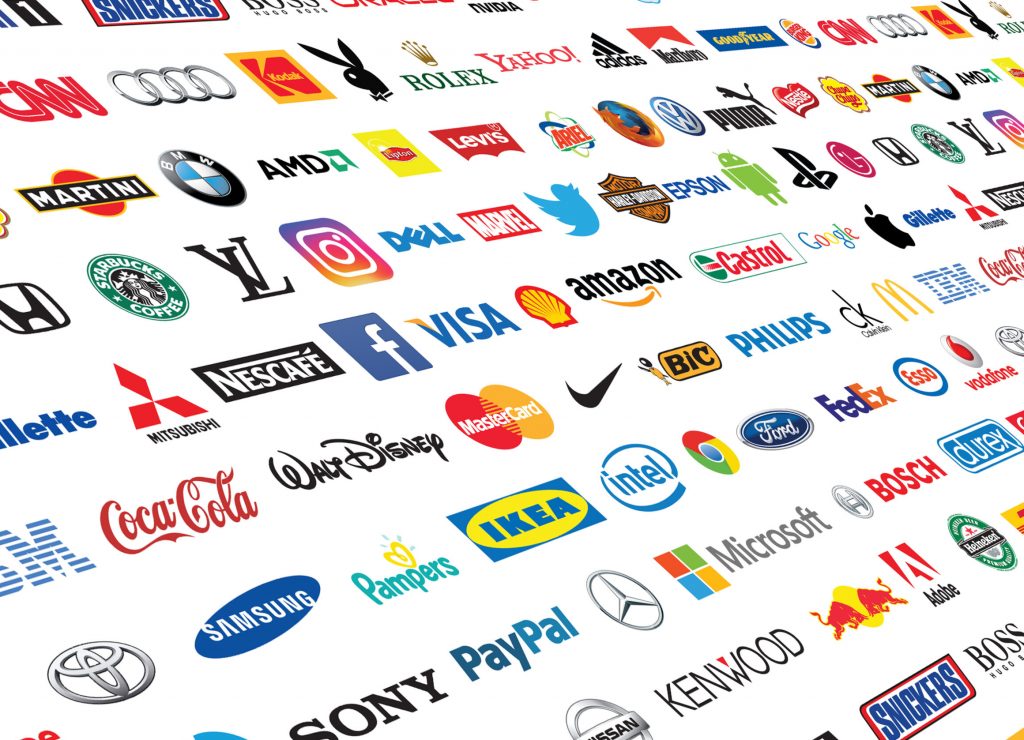What is in a brand? Once a literal reference to the “badge of origin” that distinguishes one market entity from another, brands have evolved to represent the fundamental values and beliefs of a business. For consumers, brands have taken on additional significance – with there being an element that is equivalent to a lifestyle choice, with big names like Apple and Nike even rising to the level of cult status as a result.
With this in mind, it comes as no surprise that the brand has become such a critical and commercially viable asset. Forward-thinking leaders see brand investment as an opportunity to enhance the value proposition of the business in the eyes of investors and partners, bringing greater opportunities for collaboration and diversification into alternative revenue streams. In fact, solutions that look beyond the traditional business model are especially important in times of economic downturn, to enhance business resilience by mitigating the losses from fledging investments.
As the nature of branding changes, so, too, must the efforts used to maintain it. To fully capitalize on the value of a brand, it is no longer sufficient to rely simply on the patchwork of legal protections obtained through sporadic registration. Instead, a holistic and dynamic approach is necessary to arm a business with the arsenal it needs to innovate and create as its build on the goodwill generated by these increasingly valuable – albeit intangible – assets. In today’s world, for instance, where the landscape is constantly changing, it has become even more important that a brand speak with one voice. The ripple effect of social media has the potential to amplify every single communication made by the brand, thereby, creating a long-lasting, broad-ranging impact on consumer perception.
Being accountable for the brand message
In spite of pandemic-related travel restrictions, which have inhibited our ability to physically cross borders, the ubiquitous use of the internet has kept the world more connected than ever. Happenings from halfway across the globe are known to us within minutes. We receive updates not only from mainstream media outlets, but also via first-hand commentaries disseminated on social media. This unprecedented level of information exchange has inadvertently created a more culturally and socially attuned community, with movements such as MeToo and Black Lives Matter emerging in the process.
For brands, what this translates to is increased accountability. To be held responsible to the global community at large for the social, cultural and environmental impact of each business or marketing decision. As many brands have learned first-hand, instances of non-compliance with existing norms may lead to an immediate boycott or a call for a brand to be “cancelled” by the masses, causing potentially lasting damage.
The global interconnectedness also means that political and diplomatic sensitivities are no longer confined within the four corners of the negotiation table – often, the debate spills over into the virtual arena. Netizens wield a significant influence because they have the numbers to drive the social narrative, and to demonstrate how a foreign political stance can translate into real-life social and economic impact. The recent Xinjiang cotton trade controversy is a perfect example of how brands may be affected in this era of social media diplomacy. Many well-known fashion labels have come under siege by Chinese consumers after speaking out about and/or suspending their supply of cotton from Xinjiang due to alleged human rights abuses against the Uyghur minority. These examples illustrate that it is crucial for brands to keep their ears on the ground. Any new marketing decision or campaign must be closely scrutinized to ensure that the messaging is consistent with prevailing consumer sentiment, not only in markets where they have a physical presence but also abroad. The internet knows no borders.
Managing content on diverse marketing channels
Print ads, television broadcasts, billboards – these traditional marketing avenues have almost become a thing of the past. Instead of receiving information unilaterally, consumers today crave a social experience. Social media platforms, such as Instagram, TikTok, Weibo, and YouTube, have, thus, emerged as the new face of marketing, by providing avenue for consumers to initiate conversations with and about any given brand.
And it is not only the tools that are changing. In recent years, we have seen high-value corporate sponsorships and celebrity endorsements being overtaken by influencer marketing. In many cases, rather than relying on a single personality, brands are now keen to capitalize on the word-of-mouth effect by building an army of micro-influencers to spread their content. Not only does it save time and costs for a business, but influencer marketing can also create an organic narrative that is more relatable to the ordinary consumer. In fact, research has shown that about 60 percent of YouTube subscribers would trust product recommendations from their favorite content creators, rather than those endorsed by traditional celebrities. The message hits home because influencers are perceived as part of the masses.
While the use of such relatively new marketing channels can be a potential gamechanger, brands should be cognizant that social media can be a double-edged sword. With the number of people associated with and interacting with a brand, it is impossible to have complete control over the brand image in the same way that brands had before the rise of the various social media platforms. To manage the inherent risks of adverse publicity and ambush marketing, businesses must remain connected with their audiences and “police” the online narrative as it unravels in the appropriate instances. (And given the nature of social media and the nuances of consumer reactions, brands must carefully determine when and when not to take action over products and/or narratives that they do not approve of).
In an age where social media has an even higher transmission rate than the COVID-19 virus, it is important that brands stand ready to mitigate any reputational fallouts – should they opt to take action – in a prompt and effective manner.
Digitalizing with a plan
The pandemic did not create a world of unprecedented change – it merely accelerated it. Innovations such as artificial intelligence, the Internet of Things, and data technology have been around since before the crisis struck. But a year of intermittent lockdowns and social distancing has underscored how reliant we have become on these technologies, and how they can bring us forward in this new era.
Digitalization has proven to be a particularly effective tool in consumer engagement, especially for brands that used to rely on a brick-and-mortar presence to promote their offerings. For instance, the Virtual Assistant launched by beauty retail chain Sephora was an immediate hit amongst consumers when it was first rolled-out in 2018. Conveniently located on Sephora’s mobile app, this feature combines augmented reality with AI and RFID technology to allow potential customers to try on new shades of makeup within the comfort of their home. Since many stores temporarily shuttered as a result of the pandemic, digital initiatives like these have acted as a saving grace for forward-thinking businesses.
Nevertheless, it would be unwise to pursue digital transformation without a plan. The ability to collect and process consumer data often lies at the core of any successful digitalization initiative, yet recent data breach incidents involving high profile companies may cause consumers to think twice before ticking “I consent.”
In spite of the risks, data remains a critical force in shaping the future of the retail landscape, and in fact, a 2018 study indicated that 79 percent of customers are still willing to share relevant information about themselves in exchange for more contextualized experiences. The key for companies lies in managing the data-value exchange, such that the benefits for consumers outweigh the risks of potential issues involving data protection. Apart from improving product offerings and customer experiences, consumers need to be assured that adequate data protection policies and cybersecurity infrastructure are in place well before any product launch. After all, it is always prudent to pre-empt rather than react, especially when it comes to the management of consumers’ personal data.
Securing protection for your intangible assets
Developments in technology and enhanced adoption of new media as part of the current business model have made it easier than ever to reach a wider audience. Thanks to the connectivity brought about by the internet, a third-party in another part of the world could come to know of your well-established brand, and masquerade their products and services under your flagship label. Innovation and the rapid use of technology has also meant that it is now much easier to replicate the look and feel of another’s brand in the digital realm to lure unsuspecting consumers.
The consequences of going in cold could, therefore, be disastrous – apart from a failed business venture, a company could also face enforcement actions and lose the ability to use and exploit its brand in key territories of interest. Even for brands with some existing protection, conventional risks – such as infringement, passing off, and brand dilution – are all exacerbated in the online environment, coupled with relatively new challenges posed by cyber-squatting and developments to the counterfeiting model that exist exclusively online.
As brands take advantage of current market trends and opportunities in the virtual space, it is equally as important, if not more so, for brands to arm themselves with a holistic intellectual property strategy that fits today’s demands and challenges. To mitigate these risks, an effective brand strategy should be a multi-pronged approach:
Adequate protection: Brands should proactively identify and seek protection for their intellectual property in terms of geography and business verticals. Coverage could extend to any creative material – from your brand’s trade name and logo, to the design and get-up of your products, your mobile application interface, and any content published on your webpages. A sound intellectual property strategy would necessarily require businesses to map out jurisdictions where the brand has a physical presence or a virtual footprint. Since intellectual property rights are territorial, protection for these assets must be sought in each individual country of operation.
While it may be ideal to achieve 100 percent coverage, a brand protection strategy should be balanced against costs and the need to preserve financial headroom in these uncertain times. Apart from registration and portfolio management, licensing and franchising arrangements should also be reviewed to ensure that adequate contractual safeguards are in place to protect the brand, even while allowing for commercialization and exploitation.
Monitoring and enforcement: The success of a brand strategy also hinges on the ability to enforce the rights obtained through legal protection. From the enforcement angle, “new age” internet identifiers like domain names, AdWords, hashtags, and social media handles are set to become centerpiece in the fight against online piracy and cybersquatting. Despite the potential administrative hurdles, it is essential to have a proper monitoring system in place to detect counterfeit sites, unauthorized product sales on online marketplaces, diverted site traffic and the like.
Once the illegitimate third parties are identified, the take-down approach also needs to be carefully calibrated from a reputational angle, to ensure that the brand will not be accused of abusing its dominant position.
Management buy-in: Fundamentally, at the heart of every successful brand protection strategy is support at the various levels from boardrooms, through to operations, marketing, and day to day functions on the ground. Companies and brand owners should maintain effective and robust internal policies to educate and create awareness across the various functions. Ultimately, it is important that the business as a whole adheres to and helps to develop a synchronized IP strategy, to maximize the value of these intangible assets for revenue generation.
Overall, a multi-faceted, practical and robust approach is necessary to safeguard the value of the brand and uphold its integrity in this new age.
The brands that can truly weather the storm are not those who fear and resist change, but those who embrace and capture new growth opportunities in a crisis. Instead of reminiscing about the safe harbor that we once took for granted, it is time for businesses to pivot themselves to ensure that their brands are ready to dive into today’s new gameplay.
Lorraine Tay is the joint managing partner of Bird & Bird ATMD and head of the firm’s Intellectual Property Group in Singapore.
Tze She Teo is an associate in Bird & Bird’s Intellectual Property Group in Singapore.














